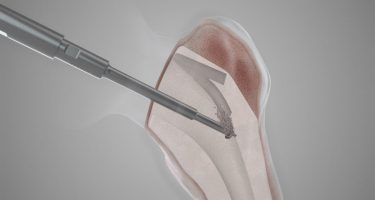Oscar™
THIS INFORMATION IS FOR HEALTHCARE PROFESSIONALS ONLY
THIS INFORMATION IS FOR HEALTHCARE PROFESSIONALS ONLY
Cemented hip revision, cement removal.
| Q.ty | Catalogue N. | Description |
|---|---|---|
| 1 | OS3000
|
ULTRASONIC GENERATOR |
| 1 | OH300/2
|
CEMENT REMOVAL HANDSET |
| 1 | OHS2062SU
|
SINGLE USE 6MM SCRAPER PROBE - SLIM |
| 1 | OHS2080SU
|
SINGLE USE 8MM SCRAPER PROBE |
| 1 | OHS2100SU
|
SINGLE USE 10MM SCRAPER PROBE |
| 1 | OHA2030SU
|
SINGLE USE ACETABULAR PROBE |
| 1 | OHP2062SU
|
SINGLE USE 6MM PIERCER PROBE - SLIM |
| 1 | OHP2100SU
|
SINGLE USE 10MM PIERCER PROBE |

Foot and Ankle Charcot Reconstruction with External Fixation
Surgical reconstruction of foot and ankle Charcot with external fixation is especially useful in the presence of poor bone quality,Read MoreExpert Tips on How to Medically Diagnose Charcot Arthropathy
The diagnosis of Charcot neuroarthropathy of the foot and ankle can be challenging due to a lack of information inRead MoreThis website is reserved only for Healthcare Professionals and their staff. Therefore, the access to these information is denied to non professional audience.

